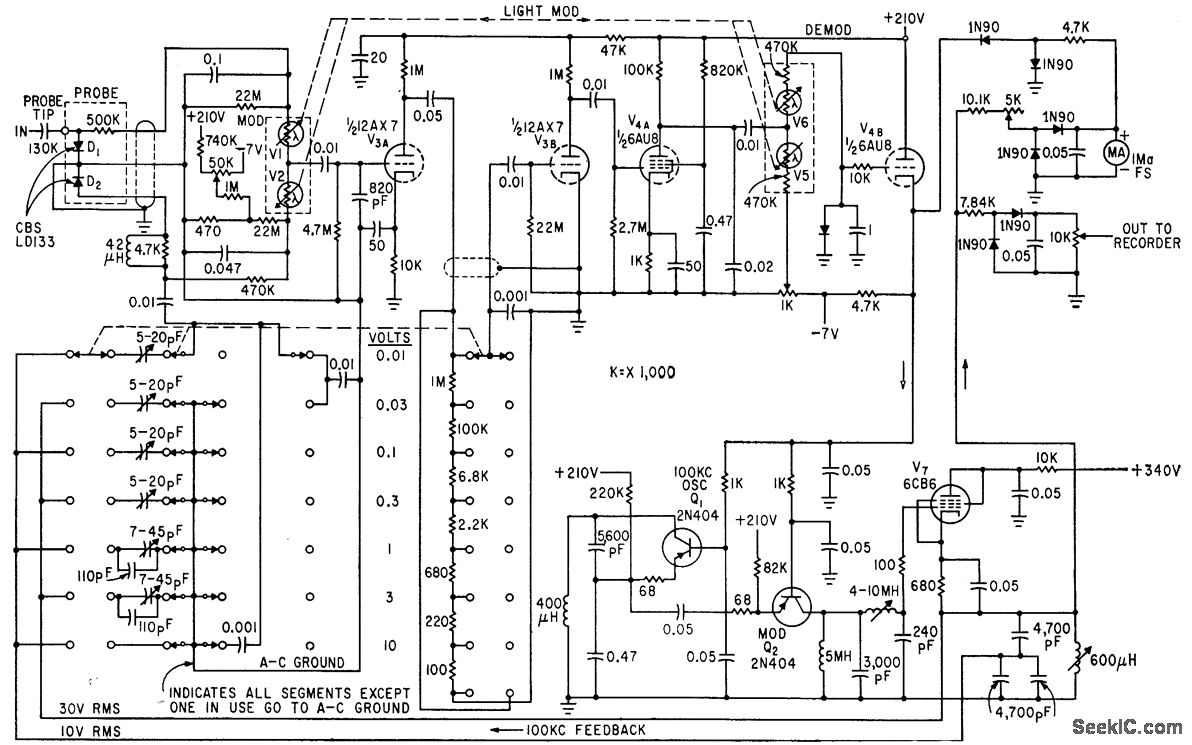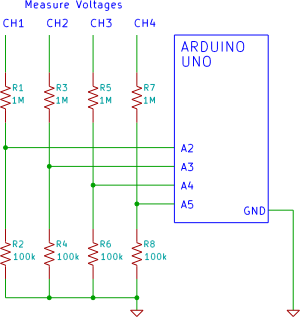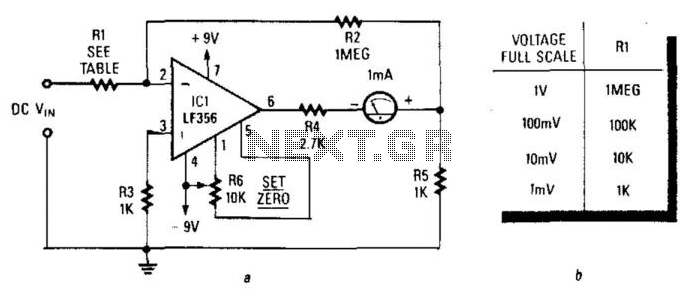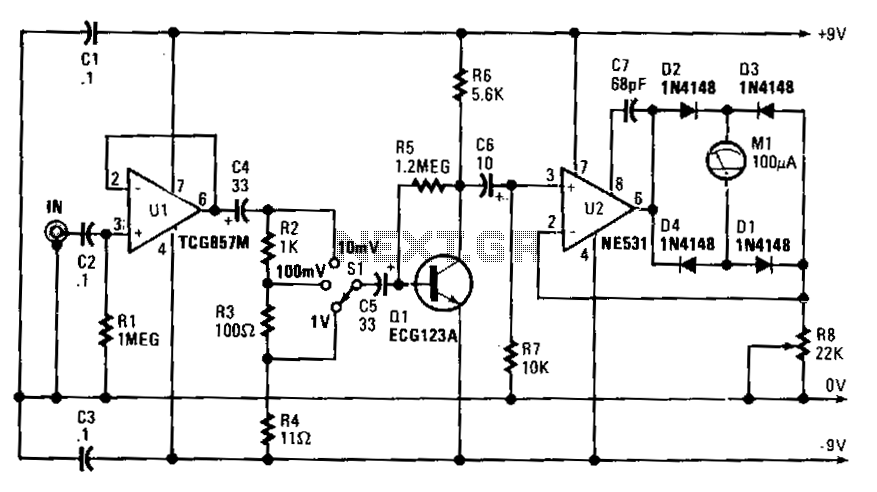
RF VOLTMETER

The circuit generates a low-frequency waveform with an amplitude that corresponds to an unknown RF voltage, utilizing a photochopper modulator (VI-V2) as an error detector. This arrangement provides seven voltage ranges from 10 mV RMS to 10 V RMS full scale, covering a frequency range of 500 kHz to 1,000 MHz.
The described circuit employs a photochopper modulator as a key component for detecting RF voltage levels. By converting the RF signal into a low-frequency waveform, the circuit enables precise measurements of low-level RF voltages. The use of a photochopper allows for effective isolation and modulation of the RF signal, which enhances the accuracy of the error detection process.
The circuit operates within specified voltage ranges, providing flexibility for various applications. The seven selectable voltage ranges allow for measurements from 10 mV RMS, suitable for detecting weak signals, to 10 V RMS, accommodating stronger RF voltages. This adaptability is crucial for applications that require precise measurement across a wide dynamic range.
The frequency response of the circuit is noteworthy, extending from 500 kHz to 1,000 MHz. This broad frequency range ensures that the circuit can effectively measure RF signals across a variety of communication and broadcasting applications, making it suitable for both laboratory and field use.
Overall, the combination of a photochopper modulator for error detection, along with the wide voltage and frequency ranges, results in a robust and versatile circuit for measuring low-level RF voltages. This design is particularly beneficial in electronics and telecommunications, where accurate measurement of RF signals is essential for system performance and reliability.Circuit generates low-frequency waveform whose amplitude is equivalent to that of unknown r-f voltage, using photochopper modulator VI-V2 as error detector. Arrangement gives seven voltage ranger from 10 my rms to 10 v rms full scale, over frequency range of 500 kc to 1, 000 Mc.
-T. C. Anderson, Measuring Low-Level R-F Voltage with Servo Feedback Te chniques, Electronics, 34:28, p 63-65. 🔗 External reference
The described circuit employs a photochopper modulator as a key component for detecting RF voltage levels. By converting the RF signal into a low-frequency waveform, the circuit enables precise measurements of low-level RF voltages. The use of a photochopper allows for effective isolation and modulation of the RF signal, which enhances the accuracy of the error detection process.
The circuit operates within specified voltage ranges, providing flexibility for various applications. The seven selectable voltage ranges allow for measurements from 10 mV RMS, suitable for detecting weak signals, to 10 V RMS, accommodating stronger RF voltages. This adaptability is crucial for applications that require precise measurement across a wide dynamic range.
The frequency response of the circuit is noteworthy, extending from 500 kHz to 1,000 MHz. This broad frequency range ensures that the circuit can effectively measure RF signals across a variety of communication and broadcasting applications, making it suitable for both laboratory and field use.
Overall, the combination of a photochopper modulator for error detection, along with the wide voltage and frequency ranges, results in a robust and versatile circuit for measuring low-level RF voltages. This design is particularly beneficial in electronics and telecommunications, where accurate measurement of RF signals is essential for system performance and reliability.Circuit generates low-frequency waveform whose amplitude is equivalent to that of unknown r-f voltage, using photochopper modulator VI-V2 as error detector. Arrangement gives seven voltage ranger from 10 my rms to 10 v rms full scale, over frequency range of 500 kc to 1, 000 Mc.
-T. C. Anderson, Measuring Low-Level R-F Voltage with Servo Feedback Te chniques, Electronics, 34:28, p 63-65. 🔗 External reference





